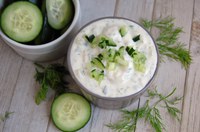Prairie Fare: Ask Yourself Some Heart-health Questions
(Click an image below to view a high-resolution image that can be downloaded)
By Julie Garden-Robinson, Food and Nutrition Specialist
NDSU Extension
At this time of the year, you probably are seeing heart-shaped boxes and bags of candy in pink or red-themed bags beckoning you from the shelves of grocery or department stores.
You might be enticed to buy a box for yourself or your sweetie. You work hard. You deserve a treat, right?
These shiny boxes or packages are quite tempting with their wide variety of milk, white and dark chocolate and other types of candy.
Dark chocolate in moderation is high in antioxidants, but it’s not a “food group” we need.
Chocolate keeps well. Savor one small piece of chocolate a day with a cup of tea or coffee, which are high in antioxidants, too.
You might want to pick up a pair of walking shoes, a pedometer or a Fitbit to promote overall good health.
Have you thought about your actual heart lately? This group of hardworking muscles pumps about 100,000 times per day, carrying oxygen and nutrients throughout your body.
February is American Heart Month, which is a good time to think about your health and the steps you can take to improve your health.
Ask yourself some questions. Visit our “Nourish and Exercise Your Body” website at https://www.ag.ndsu.edu/nourishyourbody for links to explore.
- What is your smoking status? If you smoke, make “no smoking” your goal. Smoking damages your heart and blood vessels.
- Do you maintain a healthful weight? A body mass index (BMI) between 18.5 and 24.9 is the goal. For an online BMI calculator, visit the website of the National Heart, Lung and Blood Institute at https://www.nhlbi.nih.gov/health/educational/lose_wt/BMI/bmi-m.htm. Using a calculator, determine your BMI by dividing your weight in pounds by your height in inches squared (height times height). Then multiply the total by a conversion factor of 703.
- Are you physically active? Move toward the current recommendation from the Department of Health and Human Services of 150 minutes of moderate activity or 75 minutes of vigorous activity per week (or a combination of moderate and vigorous activity).
- Do you eat a healthful diet? Aim for 4 1/2 cups of fruit/vegetables per day, 3 ounces or more of whole grains per day, at least two servings of fish per week, less than 450 calories from beverages with added sugars per week and less than 1,500 milligrams of sodium per day.
- What is your blood pressure? The goal is for the upper number (systolic) to be less than 120 millimeters of mercury and the lower number (diastolic) to be less than 80.
- What is your blood cholesterol? A blood cholesterol level less than 200 milligrams per deciliter (mg/dL) is the current recommendation.
- What is your blood sugar value? The goal is for your blood sugar to be less than 100 mg/dL.
If you are looking for a “diet” that promotes good health, consider the Mediterranean diet. This heart-healthy diet has been ranked as the No. 1 best health-promoting diet the past couple of years. Another heart-health-promoting diet, the DASH diet (short for Dietary Approaches to Stop Hypertension) is in second place.
It is similar to what is promoted on the U.S. Department of Agriculture’s MyPlate. It is not necessarily a weight-loss diet, but you might find that pounds “evaporate” when you eat more healthfully and get more exercise.
The Mediterranean diet emphasizes eating colorful vegetables, fruits, whole grains, beans and other legumes.
It includes low-fat or fat-free dairy products, nuts, nontropical vegetable oils and lean animal proteins. According to the Mediterranean diet, we should limit highly sweetened foods and beverages and foods high in saturated fat.
Eating a healthful diet and aiming for at least 30 minutes of moderate physical activity on most days of the week promotes heart health as well as brain health.
Yes, what you eat affects your ability to think and process information.
Expand your culinary explorations this month. You might think of this sauce as an accompaniment for gyros (often made with seasoned lamb) in a Middle Eastern restaurant, but it can be used in many ways.
This tasty sauce can be used as a vegetable or whole-grain cracker dip. Use it to top a baked potato, in a pita wrap, and as a sauce for almost any kind of meat, including chicken, beef, pork and lamb.
Tzatziki Sauce
1 c. plain, nonfat Greek yogurt
3/4 c. cucumber, diced
1 Tbsp. lemon juice
1 garlic clove, minced
1 Tbsp. fresh dill, chopped (1 tsp. dried dill)
1/2 tsp. black pepper
Combine all ingredients and chill. Serve with vegetables, crackers or a variety of foods.
Makes six servings. Each serving has 25 calories, 0 grams (g) fat, 3 g carbohydrate, 4 g protein, 0 g fiber and 20 milligrams sodium.
(Julie Garden-Robinson, Ph.D., R.D., L.R.D., is a North Dakota State University Extension food and nutrition specialist and professor in the Department of Health, Nutrition and Exercise Sciences. Follow her on Twitter @jgardenrobinson)
NDSU Agriculture Communication - Feb. 13, 2020
| Source: | Julie Garden-Robinson, 701-231-7187, julie.garden-robinson@ndsu.edu |
|---|---|
| Editor: | Ellen Crawford, 701-231-5391, ellen.crawford@ndsu.edu |



